Meet the Enigmatic French Painter That Inspired Daniel Templon to Become a Gallerist
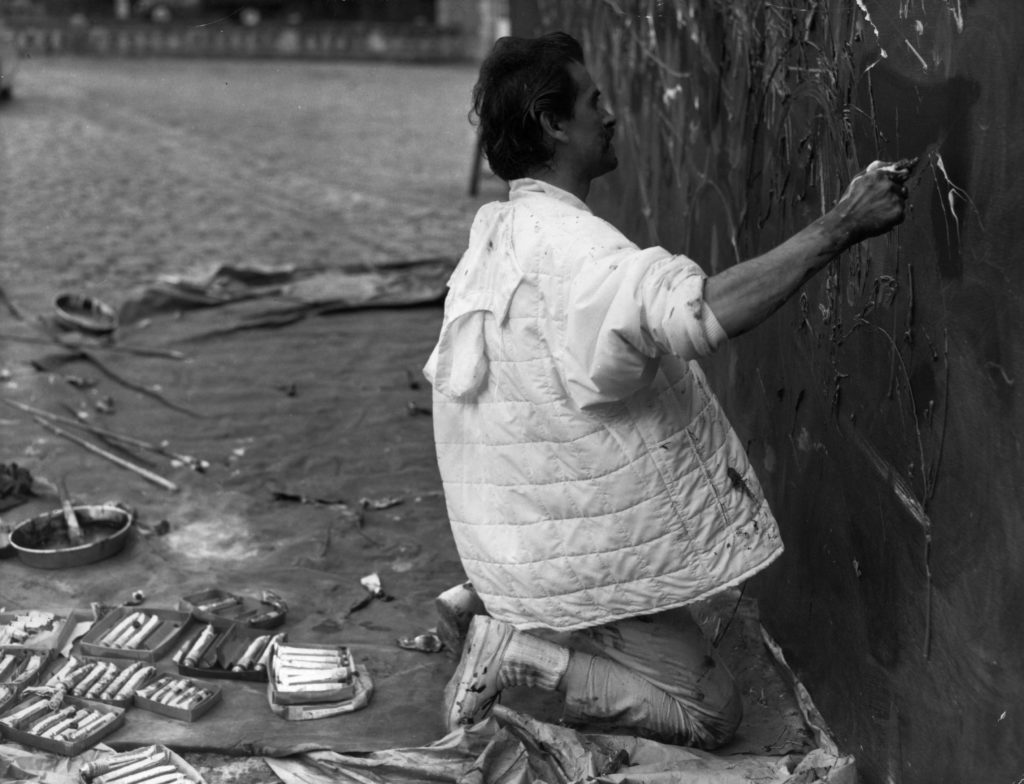

Artnet Gallery Network

Not every person in the art world can pinpoint the moment that pulled them into the industry—but Daniel Templon can. The venerable French gallerist says it happened in 1965. Templon came across a large, expressive painting by artist Georges Mathieu in the Musée National d’Art Moderne. The rest, he says, was history.
Now, the dealer is revisiting his love of Mathieu’s work. On view at the Galerie Templon’s Paris location is “Georges Mathieu: Les années 1960–1970,” a historical exhibition of nearly 30 paintings from the French artist’s most furtive period.
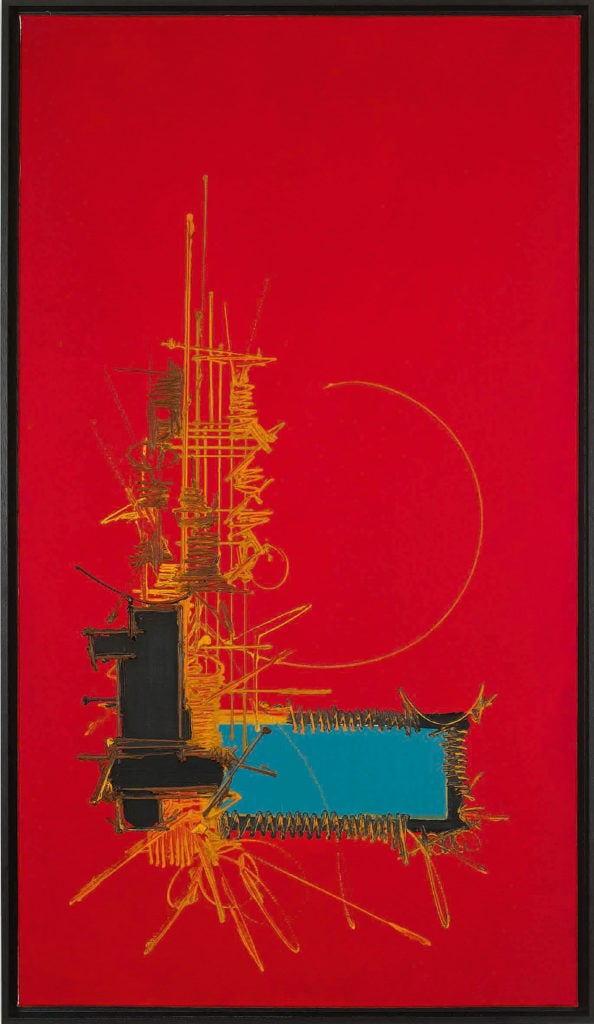
Georges Mathieu, Composition (c. 1970). Courtesy of Galerie Templon.
Mathieu, an eccentric painter with a flair for showmanship, was the founder of lyrical abstraction—a title he gave himself. It’s based on a description of the artist’s work written by French critic Jean José Marchand in 1947. For Mathieu, the phrase connoted a style of painting that prioritized form over content, energetic gesture over intentionality, and fostered the pursuit of unbridled creative expression above all else—a European companion to America’s Abstract Expressionism.
Born in 1921, Mathieu had several lives before turning to art full time. After graduating from the University of Lille, he had stints working as a teacher, a French interpreter for the American Army, a PR director for the United States Lines shipping company, and the editor-in-chief of the literary magazine United States Lines Paris Review.
He began painting in the early ’40s, working in landscapes and portraits before abandoning figurative work altogether for abstraction, experimenting with drip techniques and squeezing paint from tubes directly onto the canvas. He rose to international fame in the ’50s, producing splashy, colorful paintings with calligraphic elements. On some occasions, he executed them publicly, dressed in elaborate costume—laying the groundwork for a new type of performance art. By the ’60s and ’70s, he was widely recognized as one of France’s most famous artists.
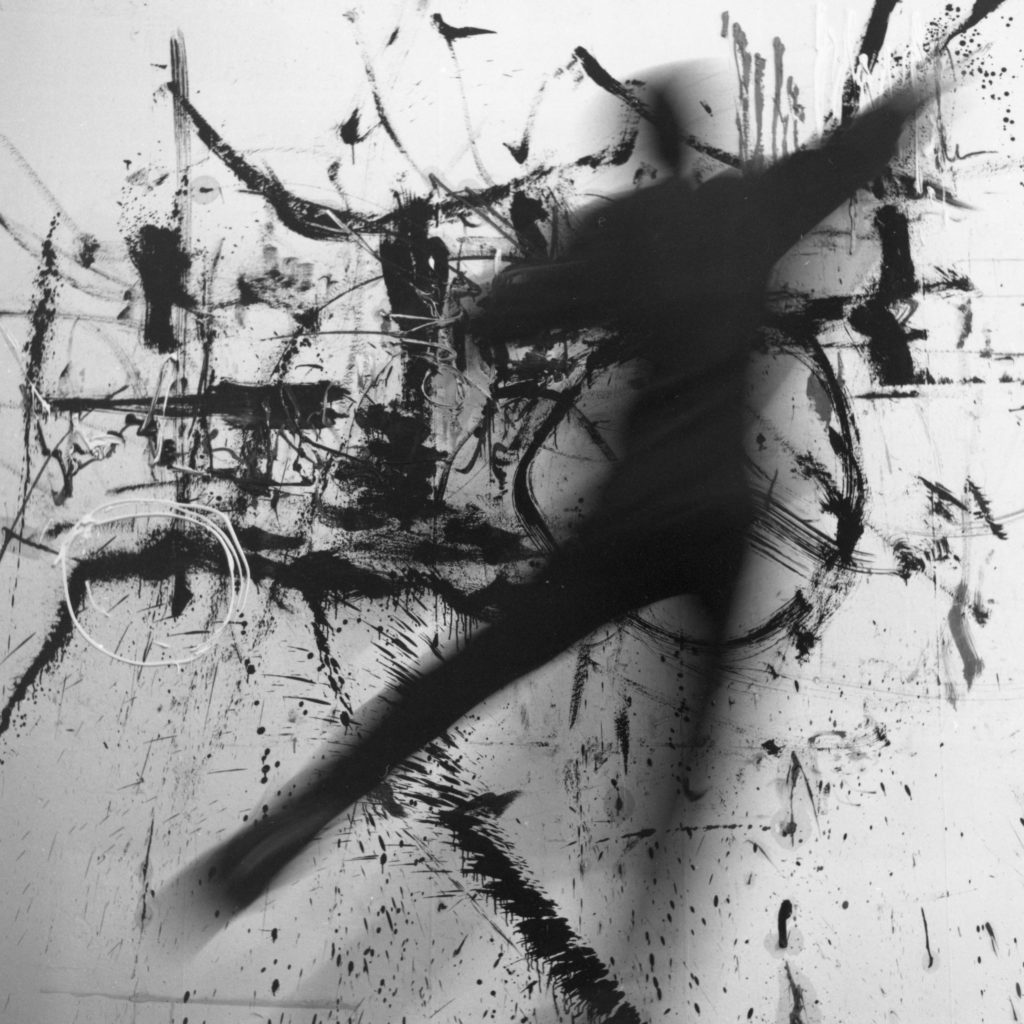
French abstract impressionist painter Georges Mathieu at work. Photo: John Sadovy/Getty Images.
Today, though, Mathieu’s work isn’t quite as well-known. The artist passed away in 2012, and though his work has received renewed interest since then, he is often recognized more for other cultural contributions—such as creating designs for national stamps, televisions logos, and the 10-franc coin—than his influential painting practice.
Revisiting the work that caused him to pursue art dealing in the first place, Templon and his gallery are trying to change that. With an impressive, heavily researched show and accompanying catalogue, the gallerist makes a compelling argument.
Below is an excerpt from the introduction to the show’s catalogue, written by Templon:
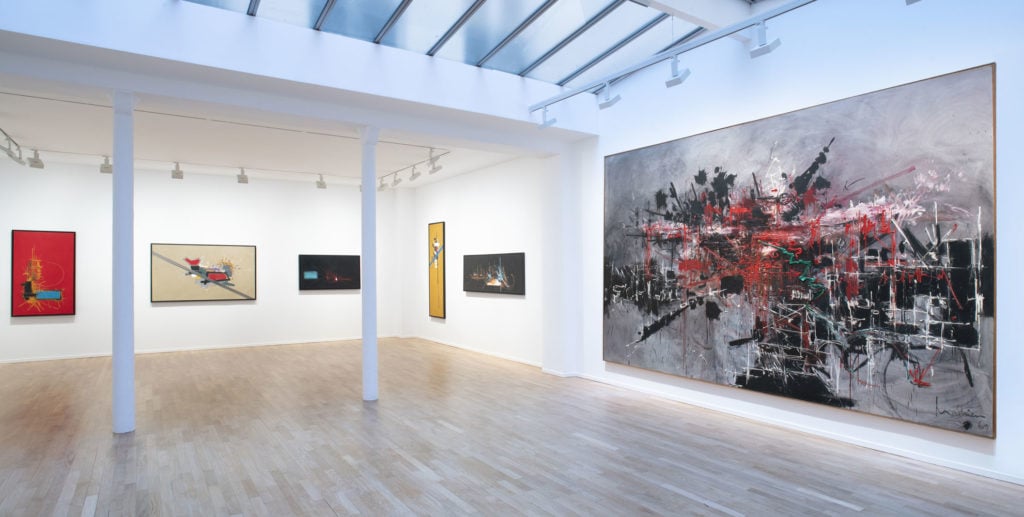
Installation view of “Georges Mathieu: Les années 1960-1970,” 2018. Courtesy of Galerie Templon.
“The very first time I visited the Musée National d’Art Moderne (now the Palais de Tokyo), in 1965, I was twenty. Towering over the large staircase in the entrance hall was a huge abstract painting, violent, lyrical, overwhelming, elegant: it was Les Capétiens partout! (Capetians Everywhere!) by Georges Mathieu. It was a real shock.
I was self-taught with no training in art history, no academic background; I learned about painting purely instinctively, without any preconceptions. I found Mathieu’s gesture extraordinary in every sense of the term: the bold exuberance of line, the freedom he displayed, his disconcerting abstraction—almost kinetic in its spectacular scale for that time—and, above all, the strangely anachronistic and provocative title. Six months later, I opened my own gallery on rue Bonaparte.
I never met Georges Mathieu, but the vivid memory of that visual encounter stayed with me for a long time. He shaped my conception of what was starting to be called ‘contemporary art’. In the mid-1960s, Paris still saw itself as the universal capital of the arts. The second School of Paris reigned supreme and artists obsessively debated the avant-garde, the superiority of abstraction over figuration and even, already, for aficionados of the object, the death of painting. For me, Georges Mathieu transcended these aesthetic squabbles, he epitomized the modern artist.
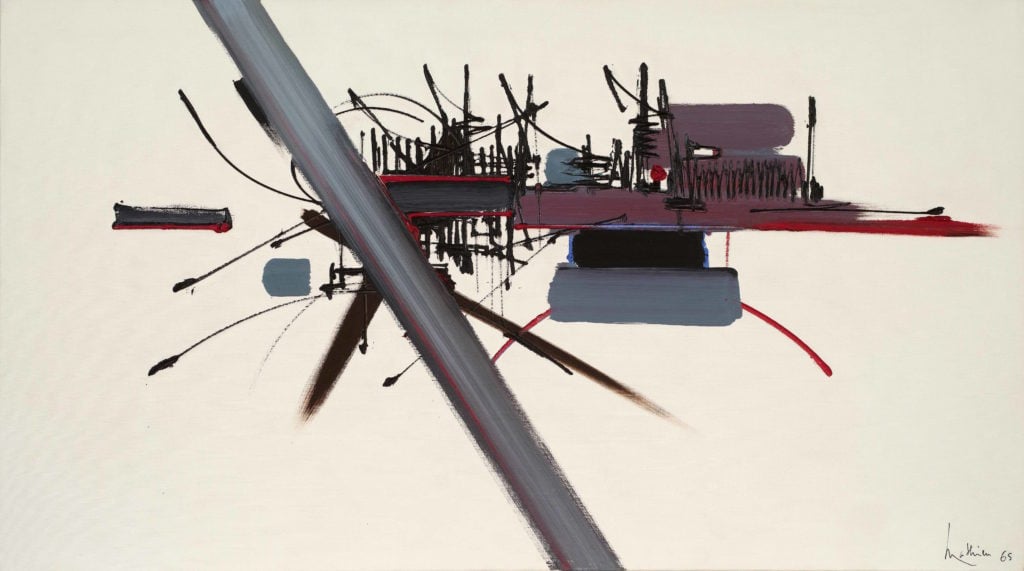
Georges Mathieu, Torque (1965). Courtesy of Galerie Templon.
The fervent enthusiasm Mathieu sparked right from the start of his career tends to be overlooked nowadays. Celebrated as a major establishment artist in France where his works were extensively exhibited, as they were throughout Europe as well as in the United States, Japan, and South America, he was one of the world’s most popular artists in the 1950s and 1960s. The renowned American art critic Clement Greenberg even wrote in 1960 in Art and Culture: ‘Right now I consider him the strongest of all new European painters.’
Just like many other great artists who have fallen victim to the shifting winds of fashion, Mathieu went through a long period when he slipped below the radar, but now, with the passage of time, his work is enjoying a remarkable return to favor. His notion of ‘great’ painting, historical but also popular, instinctive as well as cultured, his gesture, wild and free, both language and sign, bearing witness to the modernity of his era, guarantee him a place as an original and major figure in the history of twentieth-century art.”
— Daniel Templon, 2018
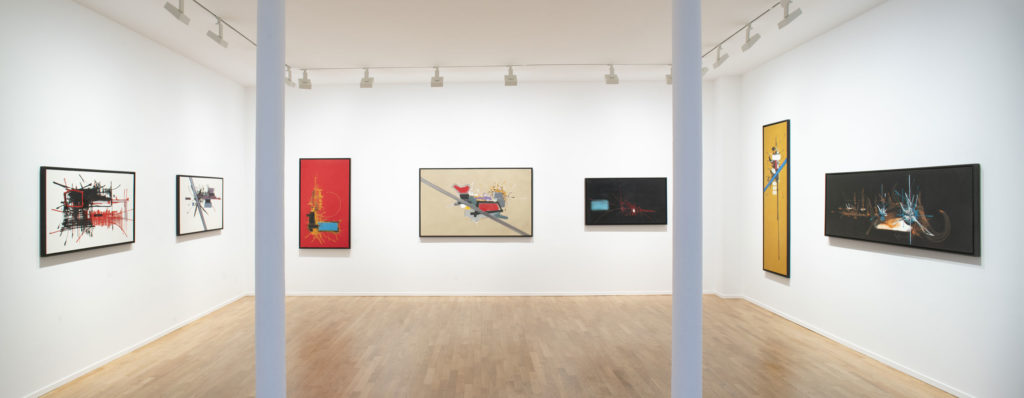
Installation view of “Georges Mathieu: Les années 1960-1970,” 2018. Courtesy of Galerie Templon.
“Georges Mathieu: Les années 1960-1970” is on view through October 20, 2018, at Galerie Templon in Paris.